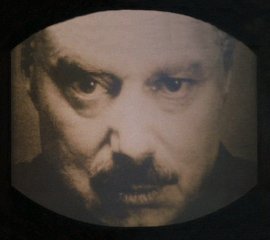The Dangers of Computer Vision.
(I thought about calling this article “The Passive and Insidious Collection of Data with Cameras” or “Should We Fear Facial Recognition?” but I think the current title gets the point across.)
Computer algrorithms have reached the point that facial recognition has become easy enough to become common place. They can even recognize emotions and other bodily conditions.
This Brazilian police department is to use AR glasses to help them distiguish criminals. Usage such as this seems innocuous and frankly, is an application that most of us would cheer. Who doesn’t like the idea that our police officers could pick out the terrorist in the crowd just by scanning the faces.
And by now, most have heard of Google Goggles, the program that allows a computer to recognize everyday objects. Right now it does better with artwork or specific objects, but they’re working towards a complete knowledge of any item or person.
Does this trend of more advanced computer vision put our privacies at risk?
Imagine a world in which everytime you go into a Starbucks to get your double-mocha latte, a camera hooked to a computer owned by Starbucks recognizes you and notes your time of arrival, your facial expressions, your clothing (which indicates your income status), who you talk to, what products your eyes linger over, do you sing to the music playing in the store and a host of other details.
Would you be worried about this collection of your personal data? In some respects, the data is there to make my purchasing experience better. Using advanced data mining techniques, Store #452 knows that the collection of 54% female and 46% male with a median of $74,329 per year salary likes light jazz to be played and prefers more muffins than donuts to be displayed.
Most people probably wouldn’t notice, but your Starbucks experience at Store #452 would become slightly better. Just enough to take the edge off your early morning commute.
What if instead, the local police department, through the use of their traffic light cameras, has determined that you speed down Hallmark Hill every afternoon at 4:50pm? So their crime analyzer program suggests that Officer DeLoop wait at the bottom of Hallmark Hill and catch you speeding. Technically, you were breaking the rules, but maybe it was only because the hill is steep and it’s hard to ride the break down the whole slope. The other 99.8% of the time you’re a good drive and obey the traffic laws. How would that ticket make you feel if you knew how they’d caught you?
Or what if a national network of cameras is used to catch terrorists? The computers sift and sort through millions of faces to find matches with known terrorists from satellite training camp videos. The computer thinks that you, based on similarities in heights, gait and facial characterists, have an 86% chance of being a Belgian terrorist. After a few weeks of interrogation and background check, your name is cleared, but what about the cost to your life?
Even after the event is over, how likely would it be that all traces of your “terrorist” connection would be cleansed from all government records. Even now the government is nortoriously bad about removing incorrect names from the No Fly List.
As computers can do more and more passive data collection, how do we protect ourselves from complete and total personal invasion? How should data be allowed to be collected? Should we know where cameras have been placed? Can anyone collect data? Can be individualized and who has rights to it?
Cameras
Cameras first and foremost should be obvious. Both where they are and when they are on and collecting data. It’s bad enough that websites collect our P’s and Q’s without our permission and sell them.
For commercial use, cameras should also have a range and that range should only be on the store property and signs should be well posted that computer vision is in action and what time of data is being collected and how it’s being used. That way, we can decide if we are going to come in contact with their camera and computer vision system.
In the public arena, camera placement is trickier. Governments will want them placed everywhere and without an obvious marker showing their location. To them, catching us and collecting data unaware is the point.
Aggragate data versus Individualized Data
There are two general ways data can be collected. The first is by aggregating the data, keeping it untethered to any individual. Trends and tipping points can be understood, but no individual is pulled out for scrunity.
An example would be using crowd counters to help place police officers in a big city. Cameras could tell HQ where crowds were proliferating and HQ, based on the data, could send officers to be ready in case of unplanned for crime.
Businesses like Walmart might track general habits of its customers, noting products they pick up and put down, much in the same way a website tracks click-throughs.
Individual data is the more insidious method. Instead of optimizing the store based on the cross-section of customers that pass through its doors, individual data would allow businesses to know who was in the store and what their preferances were and how to micro-target them with in-store ads and coupons.
The worst part is that a business could then sell that data to another business, much in the same way they collect and resell website data. In fact, it would be likely that speciality companies would step in and do the actual camera placement, computer vision and sifting and sorting and then feedback the data to the store, while selling the rest on the open data market.
For the government, lines become very blurry, very quickly, and the imparative buzzword is security. If the One Percent Doctrine can make premptive war a priority, why not keep a tigher watch on our higher risk citizens. All in the name of keeping the children safe.
The telecommunications business has been in bed with the government for quite some time, letting them syphon off information and access based on the needs of our security. The government wouldn’t even have to get permission from the telecommunications industry with a good national web of cameras. They would be pulling directly from the source. Us.
If this seems implausible, just ask Britons who are already being watched by the largest closed circuit TV system in the world. Currently, it’s estimated that the government has one CC TV for every fourteen of its citizens. That’s even more than China. They’d like to install them in private homes, too.
What can we do about it?
Right now, it’s hard to say how the whole process will play out. While we know that cameras will have the possibility of performing this kind of insidious data collection, it’s not in wide use yet. But I believe, as technology like augmented reality spread and cameras become smaller and more mobile (this TV show is putting cameras on police officers), this will become a concern, so it’s better for us to become educated to the dangers and voice our opinions early and often.
But what opinions should we voice? To this question, I offer a few points of reason.
The Data Collecting Credo
- Data can be collected in the aggregate without permission
- Individual data cannot be collected or sold without permission
- Cameras must be obvious and indicate when they are collecting
- Data used should be for the benefit of both parties
- Commercial or government data collection ends at the private property line
- Cameras cannot collect data outside of private or commercial property lines
As always, leave a comment if you have something to say.


Most articles about our increasingly transparent world are like this one, waving a warning flag about privacy without (1) offering any conceivable solution or (2) discussing the other side. What other side? Our increasing power to look back.
I explored this in the best-seller “The Transparent Society: Will Technology Make Us Choose Between Privacy and Freedom?” In all of history, no people ever succeeded in blinding the elites. They WILL see us…
…but our enlightenment developed a new method called “sousveillance”– or looking BACK from below. Our democracy was based on it and the new transparency should (if we don’t panic and think carefully) should empower us to shine light on the mighty… on the corporations and politicians.
That won’t stop them look at us. But it can keep them from DOING things to us. See:
http://www.davidbrin.com/akademos.htm
David Brin
author of The Postman
[…] week on The Future Digital Life, I posted about the Dangers of Computer Vision. The post garnered a fair amount of interest but it is a question that’s a tad ahead of its […]